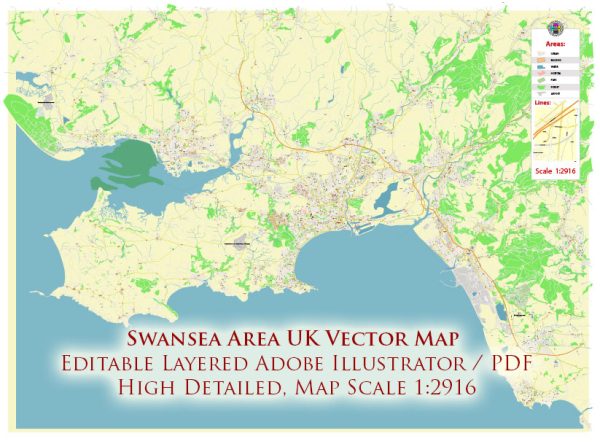Swansea, located on the south coast of Wales, has a rich history of urban development that spans centuries. The city has undergone significant changes, shaped by economic, industrial, and social forces. Here is a brief overview of the history of urban development in the Swansea area:
- Early History: The area around Swansea has evidence of prehistoric human activity, and it was likely a Viking trading post. However, it was during the medieval period that Swansea began to emerge as a town. The town’s early economy was based on agriculture, fishing, and some trade.
- Industrial Revolution: The 18th and 19th centuries brought about a transformative period for Swansea with the onset of the Industrial Revolution. The discovery of large coal deposits and the expansion of the copper industry led to rapid industrialization. The development of the port facilitated the export of coal and metal products, turning Swansea into a major industrial center.
- Copper Industry: Swansea became renowned for its copper smelting industry, earning it the nickname “Copperopolis.” The industry brought wealth to the region and attracted a diverse population of workers. The urban landscape saw the rise of industrial complexes, factories, and workers’ housing.
- Maritime Influence: The city’s maritime industry also played a crucial role in its development. The Swansea Docks became one of the most important coal-exporting ports in the world during the 19th century. This further fueled economic growth and population expansion.
- Urban Expansion: The population growth associated with industrialization led to the expansion of Swansea’s urban areas. The need for housing and infrastructure resulted in the construction of terraced housing, factories, and public buildings. The cityscape evolved to accommodate the demands of a rapidly growing industrial population.
- Post-Industrial Era: Like many industrial cities, Swansea experienced a decline in heavy industry in the mid-20th century. The closure of coal mines and a reduction in metal production had a significant impact on the local economy. This period marked a shift towards a more diversified economy, including service industries and tourism.
- Regeneration: In recent decades, Swansea has undergone various regeneration projects aimed at revitalizing the urban landscape. The waterfront area, in particular, has been a focus of redevelopment, with new residential, commercial, and recreational spaces.
- Education and Culture: Swansea is home to a university, and its cultural scene has expanded over the years. The city hosts events, festivals, and has invested in cultural institutions, contributing to a more diverse and vibrant urban environment.
- Transportation: Modern transportation infrastructure, including road networks and public transportation, has evolved to meet the needs of the city’s residents. Improvements in connectivity have played a role in shaping the urban layout and accessibility.
Overall, Swansea’s history of urban development reflects its transition from a medieval town to a major industrial center and, subsequently, its adaptation to the challenges of post-industrialization through regeneration and economic diversification.


 Author: Kirill Shrayber, Ph.D.
Author: Kirill Shrayber, Ph.D.